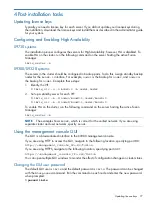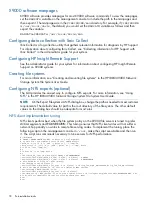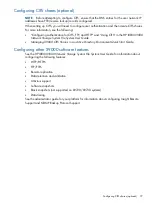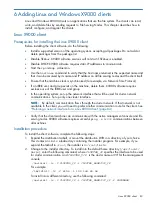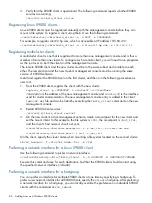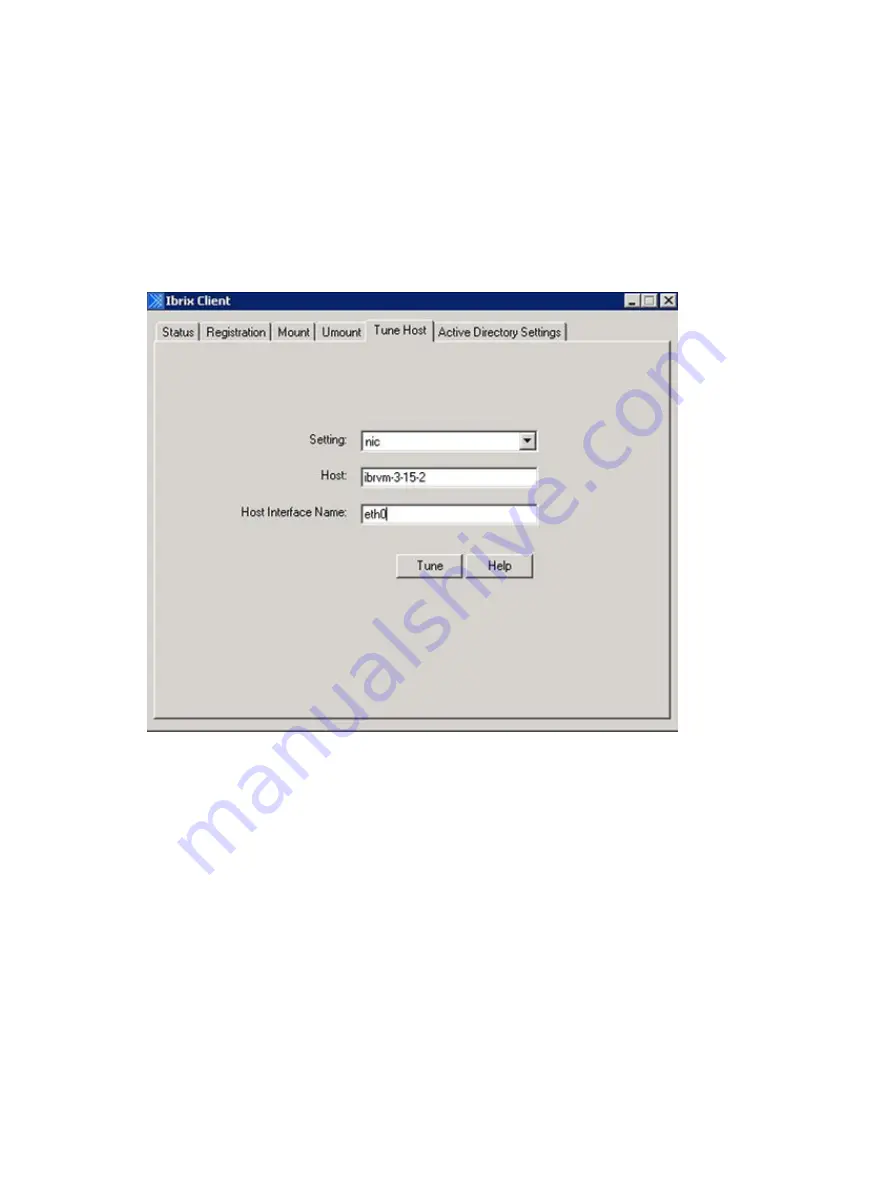
•
Tune Host.
Tunable parameters include the NIC to prefer (the client uses the cluster interface
by default unless a different network interface is preferred for it), the communications protocol
(UDP or TCP), and the number of server threads to use.
•
Active Directory Settings.
Displays current Active Directory settings.
See the online help for the client GUI if necessary.
Preferring a user network interface for a Windows client
If multiple user network interfaces are configured on the cluster, you will need to select the preferred
interface for this client. On the Windows X9000 client GUI, specify the interface on the Tune Host
tab, as in the following example.
Repeat this setting for each file serving node that Windows clients need to contact.
Enabling file system access
Only the user who has mounted the filesystem initially has write permission or full privilege for the
file system. To give other users write permission, edit the properties of the root file system.
Managing Access Control Lists
Because the Windows X9000 client might be operating in a “mixed-mode” environment in which
the same file objects are accessed from both Linux and Windows, system administrators must
consider the differences between the Linux and Windows models of file access permissions.
Windows Access Control Entries
The Linux standard file mask assigns read, write, and execute permissions on files and folders to
three classes of user (Owner, Group, Other).
Windows defines permissions on files and folders in the ACL, a data structure that consists of ACEs
that allow or deny a given permission on the file to a given user or group.
Windows X9000 client
91

